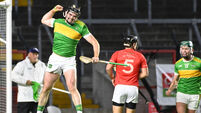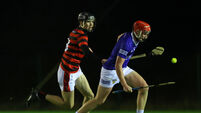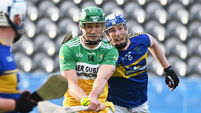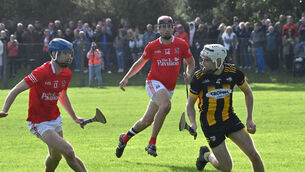John Fogarty: The worst leagues in recent memory
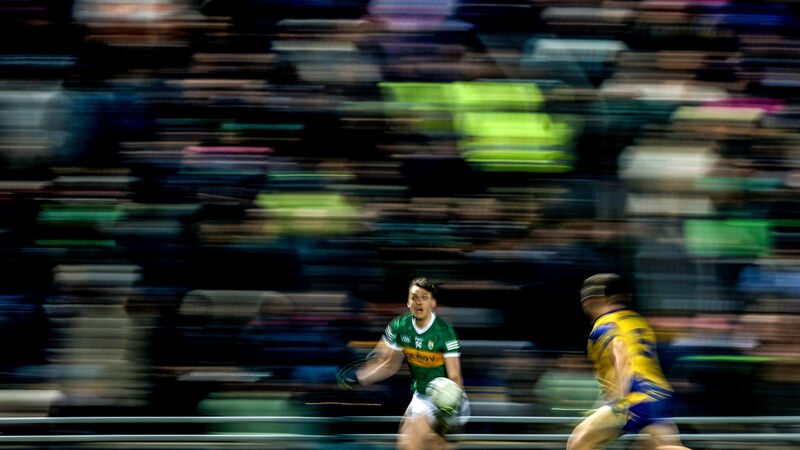
Kerry's David Clifford in full flow against Roscommon on Saturday night. Picture: INPHO/Ben Brady
There are enough reasons to be thankful for David Clifford without him cutting through the bull about this year’s Allianz Football League.
There he was on Saturday evening telling it like it is about a competition that has all the charm of a naked, grotesque emperor.
“A lot of the games take on a similar pattern in terms of teams getting men behind the ball so it’s very hard to get momentum up,” he told TG4 when asked about Kerry’s topsy-turvy form. “Every game ends very close, just with the nature of teams conceding kick-outs and stuff like that.”
The uniformity in approach taken by teams and the generic pattern of games have been contributing factors to this being one of the most disappointing Allianz Football Leagues in recent memory. Margins are unreliable as metrics of competition when, as Clifford rightly points out, almost every leading county is doing the same monotonous thing of retreating, absorbing and either breaking or building. Spontaneity may as well be a sin.
At this stage last year, there were 36 goals scored in the first five rounds of Division 1. There have been five less this season. One team, Mayo, account for over 35% of them. Just how many of this year’s Division 1 goals have come by way of out-and-out goalkeeper errors? The two in Box-It Athletic Grounds on Saturday, for two. Shane Ryan’s in O’Neills Healy Park was another.
As pointed out in these pages recently, the eight best teams in the country do not comprise Division 1 right now and it surely shows but then the frigid football played for a lot of the Dublin-Derry game in Celtic Park earlier this month wouldn’t suggest the quality would improve with the pair’s inclusion.
For all the genuine criticism of the hurling league and its dearth of consequence, for all there is riding on the football competition, it has only been marginally better. And before anyone starts bleating on about sell-out crowds such as Navan and Derry, consider the novelty of the occasions and the Harlem Globetrotter effect of Dublin – none of their players were alive when the county last played Meath in a league game in Páirc Tailteann.
Factor in too the unprecedently six-month yearning for inter-county fare. And if anyone tells you that the supposed white-hot Division 2 was where it’s at, all but one of the four promotion/relegation positions has been confirmed. Come to think of it, half of the 14 final/promotion/relegation places have been filled with a round to go.
And if somebody has the audacity to claim that Division 1 has been thrilling, that four teams could yet claim the second league final spot at the same time all but Mayo and Galway could go down, you are being gaslit. Except for Mayo’s exuberance and Galway’s grit these last two games, the banality and coiled character of Division 1 games has been mind-numbing.
Entertainment is so often mistaken for quality but this league has been shorn of both. The GAA’s media partners have to sell their wares but the superfluous adjectives used to either mask or make excuses for the ugliness that was shown over the weekend was a poor reflection on them.
What Armagh and Galway served up on Saturday was never going to distract most neutrals from the Grand Slam bid but spare us hailing the virtues of the home team’s attacking attributes when they can muster one point for the opening 20 minutes and can't score for the 35 regulation minutes of the second half.
And when the only hurling game of note in the final round of Division 1 involves two teams possibly up to half their championship teams, there is a problem. The Kilkenny-Waterford meeting was the pick of a bad bunch. That it did not even merit live coverage when football’s penultimate round received four live slots across TG4 and RTÉ said plenty about the disinterest in it. That’s what you get when winning the league becomes disincentivised.
When survival trumps success, when hurling's league is less important than its provincial round-robin and now football’s plays second fiddle to its new championship version, these winter/spring competitions are facing an existential crisis.
The GAA’s gate receipts won’t tell them how bad these last seven weeks have been. In fact, they are likely to tell a completely different story because of the wait for inter-county Gaelic games and outliers like Dublin in Division 2.
It will be felt the ticket price increase has been justified and they might not be persuaded to do anything about the structures of the leagues. But if the bottom line for one exceptional year dictates their policy and two ailing competitions that have yet to reflect the split season are left to wither on the vine then they are in for a sharp lesson.





